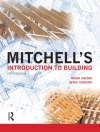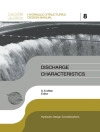Soils have various functions in all ecosystems, particularly for environmental quality and human health. The parent materials of serpentine soils are characterized by much higher contents of elements such as Mg, Fe, Cr, Ni, Co, and Mn, and thus the derived soils display potentially ecological or environmental risk due to high levels of geogenic heavy metals, low concentrations of P and K, low Ca/Mg ratios, unique flora, and unstable landscape. Serpentine soils can be produced by ultramafics alone and also by hydrothermally altered ultramafics in the presence of serpentines, but they are abundant in ophiolite belts along tectonic plate margins. To sustain natural resources such as serpentine soils, we need a better understanding for the impact of serpentine soils on (1) the pedosphere and rhizosphere, (2) ecology and restoration, (3) biogeochemical cycling of elements, (4) environmental quality, crop quality, food safety, and human health, and (5) phyto-accumulation and agromining of heavy metals (i.e., nickel) worldwide. Hence, the purpose of this book is to study the biogeochemical characteristics of serpentine soils. In the beginning, the authors introduce the basic knowledge of these soils including pedogenesis, mineral weathering, morphology, and classification. Moreover, bioavailability, plant uptake, and human health risk were discussed for the enriched heavy metals in serpentine soil. Finally, applications of serpentine soil in the environment were mentioned for research needs in the future.
Zeng-Yei Hseu
Biogeochemistry of Serpentine Soils [PDF ebook]
Biogeochemistry of Serpentine Soils [PDF ebook]
Köp den här e-boken och få 1 till GRATIS!
Formatera PDF ● Sidor 207 ● ISBN 9781536138764 ● Redaktör Zeng-Yei Hseu ● Utgivare Nova Science Publishers, Inc. ● Publicerad 2018 ● Nedladdningsbara 3 gånger ● Valuta EUR ● ID 6877753 ● Kopieringsskydd Adobe DRM
Kräver en DRM-kapabel e-läsare












